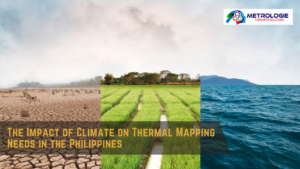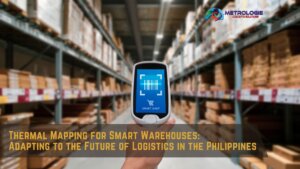In regulated industries such as pharmaceuticals, biotechnology, and medical device manufacturing, ensuring the quality and safety of products is paramount. This necessitates rigorous processes like validation and qualification, which are often used interchangeably but have distinct meanings. Among the tools used in these processes, thermal mapping plays a crucial role in demonstrating the consistency and uniformity of temperature-controlled environments. This article aims to clarify the differences between validation and qualification and illustrate where thermal mapping fits within these processes.
Understanding the Core Concepts: Validation and Qualification:
While both validation and qualification are designed to demonstrate that a process or system consistently performs as intended, they differ in scope and focus:
- Qualification: Focuses on equipment and systems, demonstrating that they are properly installed, operate correctly, and lead to the expected results. It’s a component of validation.
- Validation: Encompasses the entire process, including equipment, procedures, and personnel, to ensure that the process consistently produces a product that meets predefined specifications and quality attributes.
A Deeper Dive: Qualification Stages:
Qualification typically involves several stages:
- Design Qualification (DQ): This stage verifies that the design of the equipment or system meets the user requirements and applicable regulatory standards. It involves reviewing design documents, specifications, and drawings.
- Installation Qualification (IQ): This stage verifies that the equipment or system is installed correctly and according to the manufacturer’s specifications. It involves inspecting the installation, verifying connections, and documenting the installation process.
- Operational Qualification (OQ): This stage verifies that the equipment or system operates as intended throughout its operating range. It involves testing the equipment or system under various operating conditions and documenting the results.
- Performance Qualification (PQ): This stage verifies that the equipment or system, when operating within its established parameters, consistently produces a product that meets predefined specifications and quality attributes. It involves simulating the actual process and collecting data to demonstrate consistent performance.
The Broader Scope: Validation Stages:
Validation encompasses a wider scope, including qualification, and typically involves the following stages:
- Process Design (PD): This stage defines the process and its critical parameters, including materials, equipment, and procedures.
- Process Qualification (PQ): This stage, which includes the equipment PQ, demonstrates that the process consistently produces a product that meets predefined specifications and quality attributes.
- Continued Process Verification (CPV): This stage involves ongoing monitoring and control of the process to ensure that it remains in a validated state throughout its lifecycle.
Where Thermal Mapping Fits In:
Thermal mapping plays a critical role in both qualification and validation, particularly in demonstrating temperature uniformity and consistency within controlled environments. Its applications are most prominent in:
- OQ (Operational Qualification):
- Thermal mapping is used to verify the temperature distribution within equipment like autoclaves, incubators, freezers, and ovens.
- It ensures that the equipment maintains the required temperature range and uniformity across all critical points.
- This stage proves the equipment can operate within the required temperature parameters.
- PQ (Performance Qualification):
- Thermal mapping is used to simulate the actual process, including product loading, and demonstrate that the product is exposed to the required temperature conditions.
- It ensures that the entire process, including equipment and procedures, consistently produces a product that meets predefined temperature specifications.
- This stage proves the equipment, and process combined, can produce a product that meets temperature specifications.
- CPV (Continued Process Verification):
- Thermal mapping can be used as a monitoring tool to ensure that the temperature-controlled environment remains within validated limits during routine operations.
- It helps detect any deviations or trends that may indicate a need for maintenance or recalibration.
The Science Behind Thermal Mapping:
Thermal mapping utilizes calibrated temperature sensors, data loggers, and specialized software to record and analyze temperature data within a controlled environment. The process typically involves:
- Sensor Placement: Strategically placing temperature sensors at critical points within the environment to capture temperature variations.
- Data Logging: Continuously recording temperature data over a specified period, simulating the actual process.
- Data Analysis: Analyzing the recorded data to generate temperature distribution maps and identify any temperature excursions or inconsistencies.
- Reporting: Documenting the results of the thermal mapping study in a comprehensive report, including temperature maps, data tables, and conclusions.
Benefits of Thermal Mapping in Validation and Qualification:
- Demonstrates Temperature Uniformity: Provides visual evidence of temperature distribution within controlled environments.
- Identifies Hot and Cold Spots: Pinpoints areas with temperature variations that may affect product quality.
- Ensures Compliance: Helps meet regulatory requirements for temperature-controlled environments.
- Optimizes Process Parameters: Provides data to optimize process parameters and improve product quality.
- Reduces Product Loss: Minimizes the risk of product loss due to temperature deviations.
Key Considerations for Thermal Mapping Studies:
- Sensor Calibration: Ensure that all temperature sensors are calibrated and traceable to national or international standards.
- Sensor Placement: Strategically place sensors at critical points to capture temperature variations.
- Data Logging Duration: Log data for a sufficient period to simulate the actual process.
- Data Analysis and Reporting: Analyze the data thoroughly and document the results in a comprehensive report.
- Regulatory Compliance: Adhere to relevant regulatory guidelines and industry standards.
The Interplay of Validation, Qualification, and Thermal Mapping:
Validation and qualification are interconnected processes, with qualification serving as a component of validation. Thermal mapping plays a crucial role in both processes, providing data to demonstrate temperature uniformity and consistency within controlled environments. By understanding the differences between validation and qualification and the role of thermal mapping, organizations can ensure the quality and safety of their products and meet regulatory requirements.
Key Takeaways:
- Qualification focuses on equipment, while validation focuses on the entire process.
- Thermal mapping is essential in OQ, PQ, and CPV stages.
- It demonstrates temperature uniformity and ensures compliance.
- Proper sensor calibration and strategic placement are critical for accurate data.
- Understanding these concepts is crucial for regulated industries.
By integrating thermal mapping into their validation and qualification processes, organizations can enhance product quality, ensure regulatory compliance, and mitigate risks associated with temperature-controlled environments.




